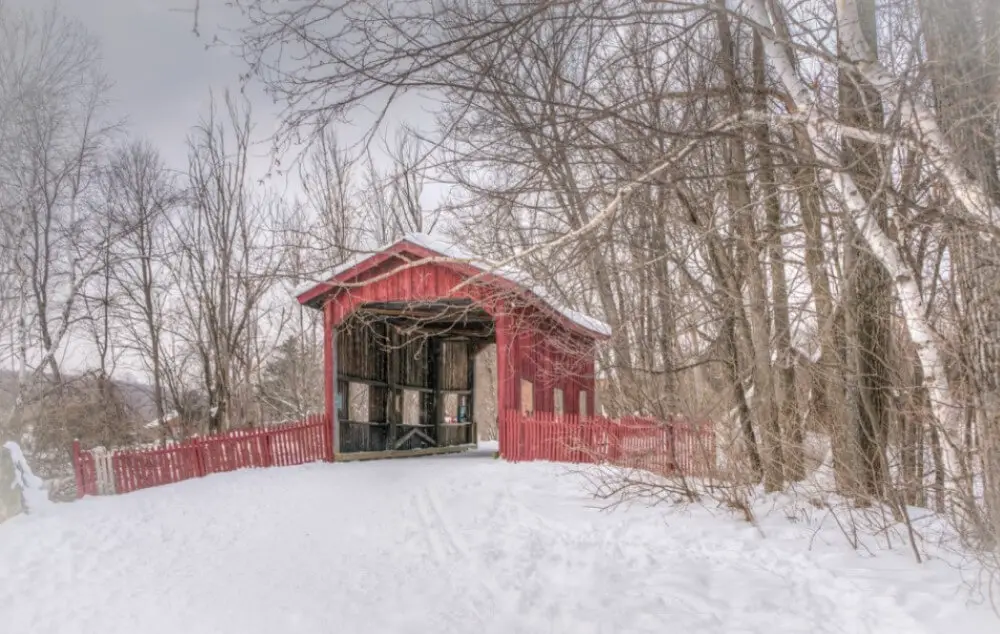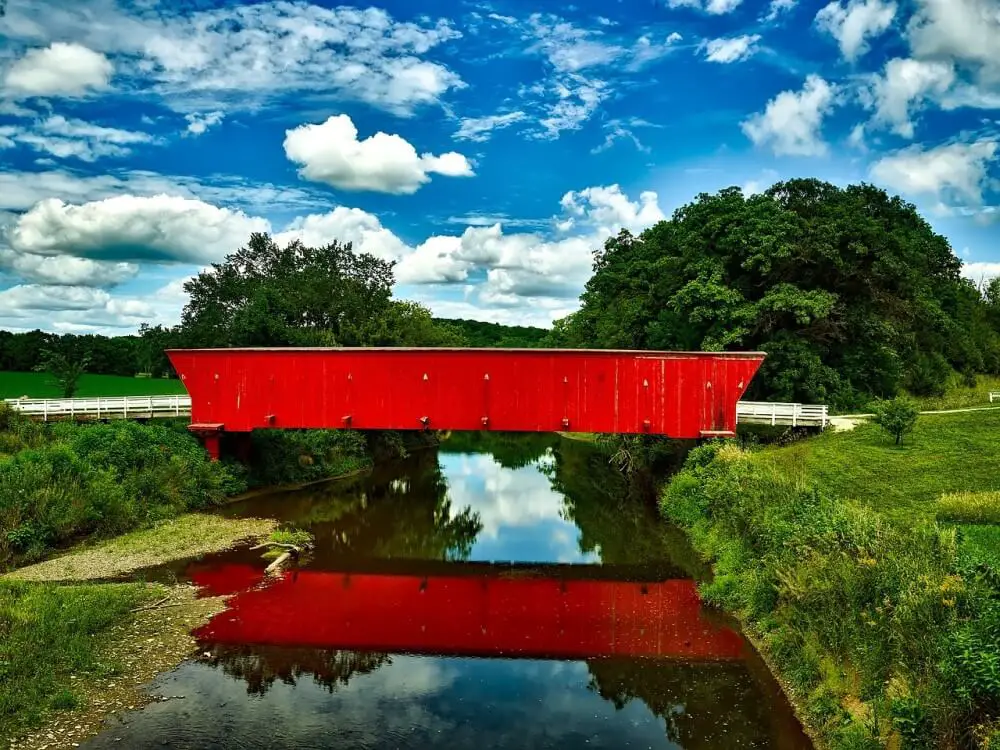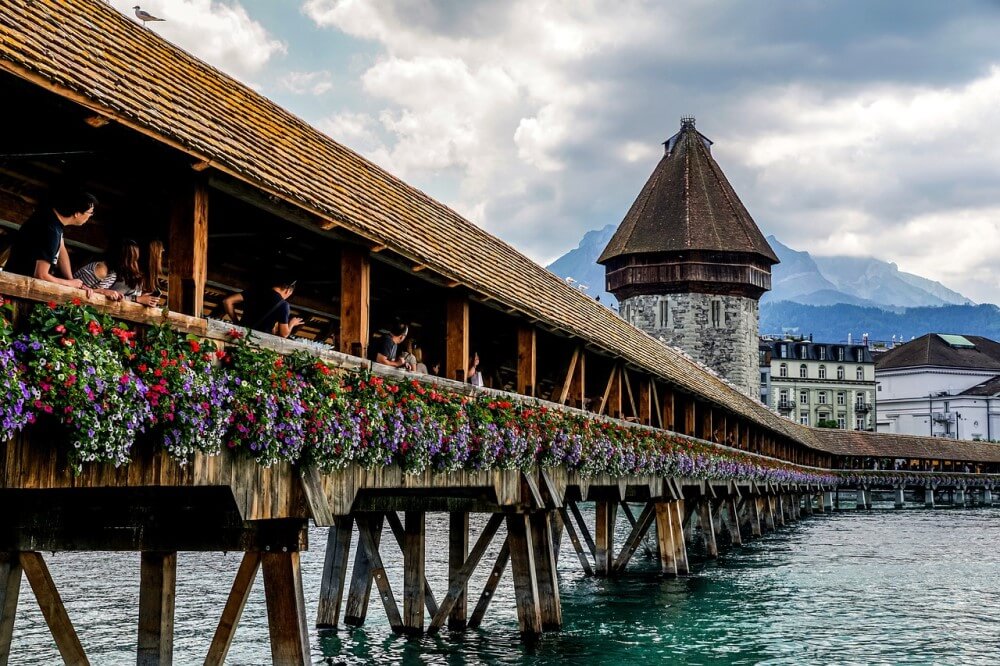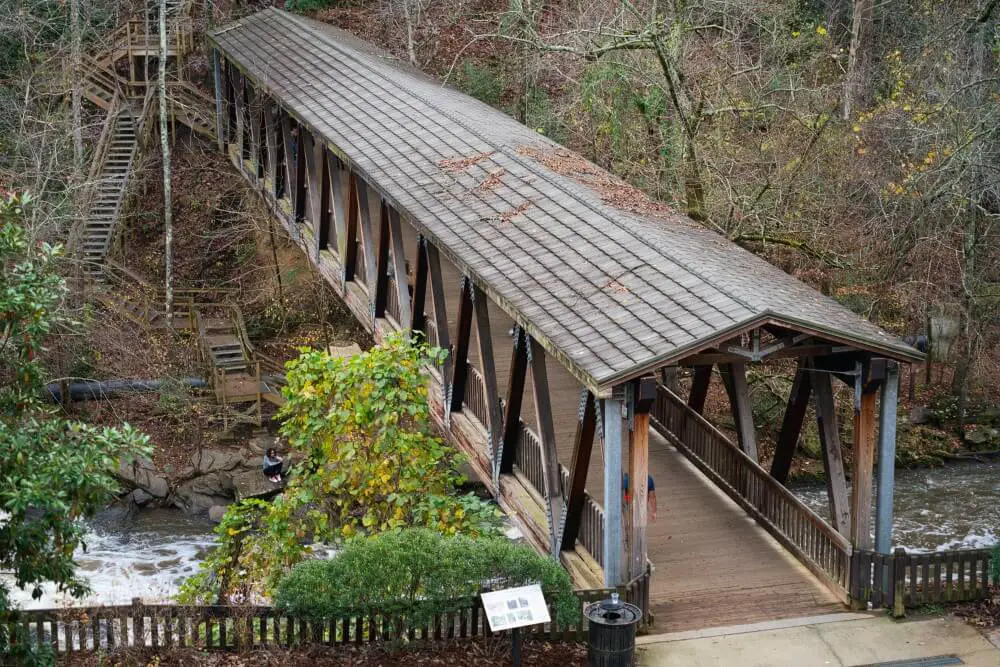Bridges represent some of the most iconic structures found anywhere in the world. They can span anywhere from metres to miles, and allow us to span some of the planet’s most formidable obstacles.
No one bridge is the same, and there are plenty of different varieties of them dotted around the globe. Take, for example, the covered bridge: one of the most unique types of bridge around.
Although they are relatively few and far between, these structures have a unique place in bridge construction, and over the last few decades have become culturally significant in their own right. But, at first glance, it’s hard to know why they were covered in the first place.
So, with that in mind, let’s explore the question: why are some bridges covered?
Put simply, there are a variety of reasons behind why some bridges are covered. Some of the main factors include structural support, protection from the elements, and aesthetics. However, due to their common usage in particular parts of the world, covered bridges have also been built for traditional and cultural reasons as well.
Read on to find out where covered bridges are located throughout the world, what the advantages and disadvantages of them are, and why they aren’t built so much any more.
But first, let’s further identify the top 5 reasons behind why some bridges are covered:
Explore our related articles:
Top 20 White Elephant Construction Projects Around the World10+ Amazing L Shaped Buildings from Around the World
25+ Amazing Facts about Battersea Power Station
What is the Tallest Building We Could Build?
Would it be Possible to Build the Pyramids Today?
Which Current Buildings will Last the Longest?
Top 15+ Longest Buildings in the World
Why is a Building Called a Building if it's Already Built?
Structural Support
First on our list explaining why some bridges are covered is the added structural support that the cover provides.
One of the primary tasks of most bridges is to handle large weight loads, ensuring that they are suitable for the crossing of heavy vehicles and cargo. As with any load-bearing structure, an even spread of weight distribution is required for stability.
Before modern bridge construction techniques such as post-tensioned prestressing and cantilevering could be utilised, and wooden bridges were the norm, this was a pressing concern. This is because the wooden bridge decks were particularly susceptible to bending and breaking under intense pressure.
As a solution to this, covers were implemented on bridges to alleviate some of the pressure on the structure. The roof acts as a stabilising force, and, as a truss, greatly increases the strength of the entire structure and helps to distribute weight evenly.
Indeed, this structural support can also be bolstered with the addition of other structural elements, such as braces or further supports. With this additional support, there is a reduced risk of structural damage, prolonging the life of the bridge and reducing the need for repairs.
Protection from the Elements
Typically, bridges have an exposed superstructure, and are usually subjected to a wide manner of elements, including wind, rain and snow. Over time, this can present issues such as corrosion and rust, which can weaken the bridge deck and potentially cause cracks.
This was particularly a problem with wooden bridges, which were the predominant type of bridge built until the 19th Century, when construction technology improved. Wood is more susceptible to rotting than metal, and its usage sped up the rate of structural decay.
One way that civil engineers have helped to prevent long-term damage is to cover bridges, typically with a gable roof. Here, the roof acts as a physical barrier to any elements, blocking any wind, rain or snow from reaching the bridge deck – in turn lowering the risk of corrosion and cracks.

Appearance
Beyond the functional benefits of covered bridges, appearance also plays a part in their appeal. Architects have gone to great lengths to ensure that covered bridges looked aesthetically pleasing while performing its key role.
The most common type of covered bridge is one with a gabled roof, which has become the visual trademark for this type of structure. But, there are covered bridges of many different styles, and there are plenty of varied examples of beautiful covered bridges dotted around the world.
In fact, some covered bridges have become renowned for their beauty, and attract a lot of visitors as a result. Two examples include the Newfield Covered Bridge in New York, and the Roseman Covered Bridge in Winterset, Iowa.
Local tradition
In modern times, another aspect to the appeal of covered bridges has to do with its connection with local traditions. In Northeastern parts of the USA, for example, the design of many modern covered bridges harks back to 18th Century American architecture that is well-known and loved in the region.
Indeed, due to the fact that only around 1 in 10 covered bridges in Europe and North America has survived to the 21st century, covered bridges are often seen as nostalgic and a relic of a bygone era. Communities often take great pride in these structures, and local officials allocate resources to make sure they are maintained properly.
Such is the recognition of covered bridges that the structures have been known to feature in a wide range of material, from artwork and branding to local souvenirs. They have even been referenced in fiction and non-fiction stories, such as in Edgar Allen Poe’s ‘Never Bet the Devil Your Head’.

Noise Reduction
Although it may not be one of the primary reasons why bridges are covered, it’s worth mentioning that covered bridges reduce the amount of noise pollution that is generated by its occupants. This is particularly useful for covered bridges located in urban areas, which may have residents living nearby.
During the 19th Century heyday of covered bridges, the horse-and-cart was the main method of transportation, with the railroads to come later. Naturally, whenever the cart or train would pass over the wooden deck, it would have created a loud noise.
Adding a roof would have helped to dampen this noise by absorbing some of the sound waves produced. In more remote areas, this means less impact for local wildlife as well.
Where are Covered Bridges Most Located?
Although covered bridges are situated all over the globe, they can be mostly found in the Northeastern region of the United States. In particular, the state of Vermont has kept a large proportion of their historic covered bridges compared with other places, while there are also some in the Midwest and Pacific Northwest regions.
But it isn’t just the USA that has covered bridges. There are also lots of examples in Canada and Europe, with the Kapellbrücke in Lucerne being the oldest and perhaps most famous of all.
Unfortunately, many covered bridges have been lost over the years, due to a variety of reasons including natural degradation, modernisation and natural disasters. In total, there are thought to be around 600 covered bridges left standing worldwide.

What are the Disadvantages of Covered Bridges?
As we have explored, there are numerous benefits to covered bridges that architects and civil engineers have exploited over the last 1000 years. However, there are notable disadvantages of covered bridges that have had to be considered as well.
The main disadvantage of covered bridges is the added maintenance and repair costs that come with the additional structural elements. Furthermore, the structures can be harder to access for large modern vehicles, which is partly the reason why they have often been replaced by newer trusses.
Covered bridges are also especially vulnerable to freak events, such as floods, high winds or heavy snowfall. However, in most cases, additional steps can be taken to preserve their structural foundation should there be particular cause for concern.
Why have they Stopped Building Covered Bridges?
There are a number of factors behind why there are less covered bridges built in modern times compared to the 19th Century, but the most prevalent ones include changes in transportation and logistics. Put simply, vehicles have gotten larger and heavier, and there are more of them, meaning much higher weight limits are required for modern bridges.
As well as this, the cost and material requirements of maintaining covered bridges are likely higher than constructing a new bridge. For, the ability to source high-quality lumber suitable for bridge construction would be more difficult than sourcing steel or concrete.
That’s it for our guide to why some bridges are covered. We hope it has further illuminated the skill of civil engineers in creating and maintaining the structures we take for granted.
Want to know more about what’s happening in the world of infrastructure? If so, explore our selection of related articles. They feature a guide to why HS2 is taking so long to build.
Or, if you’d like more definitions on building and architecture vocabulary, take a look at our selection of building wikis. For instance, explore our explanation of what a tuned mass damper is.
Last Updated on 11 August 2023 by Michael
